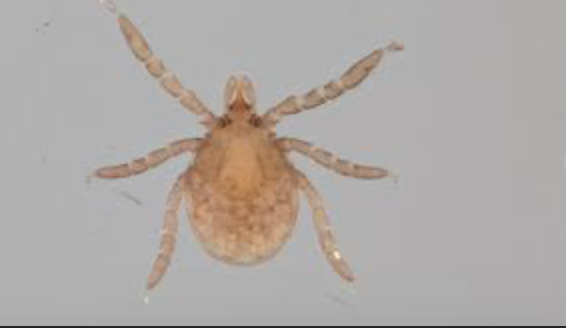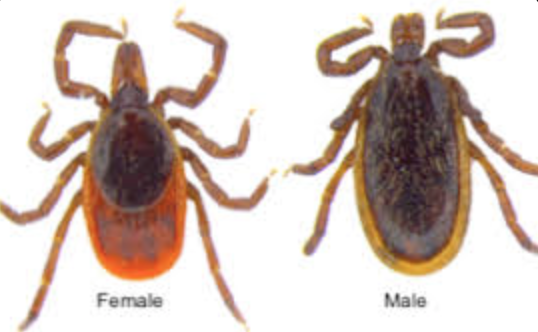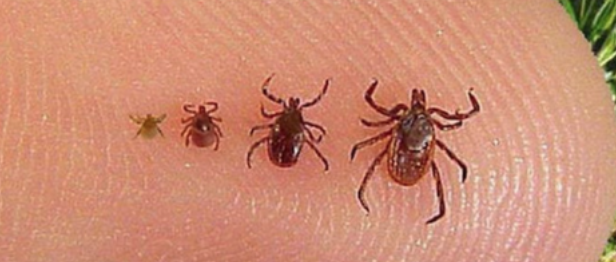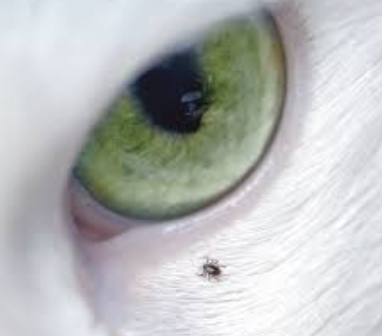Ticks are fascinating yet concerning creatures, especially when it comes to understanding the tick life cycle for better control and prevention. There are several species of ticks, like the deer tick, American dog tick, and lone star tick, just to name a few. Despite their differences, they all follow a similar life cycle that is comprised of four distinct stages.
The Tick Life Cycle Begins With The Egg Stage.
During this phase, a female tick can lay thousands of eggs at once, usually in a secluded damp area. These eggs hatch into larvae, tiny six-legged versions of ticks often referred to as seed ticks. The larval stage is brief and involves questing for a small host for a blood meal.
After feeding, larvae molt into nymphs, which have eight legs like an adult tick but are smaller in size. This is the stage where ticks start to become a significant threat, as they can attach to larger hosts, including pets and humans, to continue their development.
The adult stage is where ticks reach maturity. At this point, they seek larger hosts for sustenance and breeding opportunities. Female ticks will often consume a substantial amount of blood in this stage, which is crucial for laying the next batch of eggs, thus continuing the cycle.
Understanding these stages is essential. Each stage presents opportunities to control and prevent tick infestations, either by targeting areas where eggs are laid or by removing ticks before they mature and reproduce. Always remember, early intervention is vital in managing tick populations effectively.
Watch This Video To Better Understand The Tick Life Cycle
Duration of Each Of The Tick Life Cycle Stages
The journey from egg to adult tick can vary significantly depending on several factors. Understanding the timeline can help in strategizing control measures.
The 1st Stage Of The Tick Life Cycle: The Egg

The egg stage lasts anywhere from a few weeks to a couple of months, heavily influenced by environmental conditions like temperature and humidity. Warmer, damper conditions can speed up this phase.
The 2nd Stage Of The Tick Life Cycle: The Larvae

Larval ticks, once hatched, typically quest for their first host within weeks. This stage might last around one month, as their survival largely depends on finding a host quickly for that critical first blood meal. After feeding, larvae evolve into nymphs.
The 3rd Stage Of The Tick Life Cycle: The Nymphal

The nymphal stage is tricky because they can survive without a host for up to several months if needed, but generally, they aim to feed and molt into adults within a year.
The 4th Stage Of The Tick Life Cycle: The Adult

Adult ticks are quite hardy and can live for a few months to a couple of years, again dependent on favorable conditions and food availability. Females, especially, are on a time crunch post-mating to feed and lay eggs, perpetuating their species.
Geographical location and season also play crucial roles in this lifecycle timing.
For example, ticks in more temperate climates may cycle faster due to prolonged warmth and humidity, whereas those in colder regions might have longer life cycles.
Recognizing these durations aids in timing interventions, such as applying tick preventatives during peak larval or nymph activity, or modifying yard environments to be less hospitable to tick survival and reproduction.
The Impact of Ticks on Pets
Ticks pose significant risks to our furry friends, carrying diseases that can seriously affect their health. One of the most common tick-borne diseases is Lyme disease, which not only affects humans but can also lead to mobility issues and organ damage in dogs. Other ailments include anaplasmosis and ehrlichiosis, which can cause symptoms like lethargy, joint pain, and loss of appetite.
Recognizing signs of tick-borne illnesses in pets is crucial
Early detection often leads to more effective treatment. Symptoms to watch for include excessive scratching, fever, a reluctance to move, or visible ticks on their skin. Regularly checking pets, especially after time outdoors, helps in spotting these pests early.
To defend your pets against ticks, consider using preventive treatments. These range from topical applications and oral medications to tick collars, all designed to either repel or kill ticks before they can cause harm. Consulting with a vet can help determine the best option suited to your pet’s lifestyle and health.
Maintaining a tick-free environment is equally important. Keeping yards tidy by regularly mowing the lawn and clearing away leaf litter can significantly reduce tick habitats. Creating a buffer zone with wood chips or gravel between lawns and wooded areas also helps in minimizing tick migration into play areas.
Taking proactive steps not only protects pet health but also reduces the risk of ticks spreading to family members, creating a safer environment for everyone.
Learn More About Getting Rid Of Ticks & Preventative Measures For Your Pets
Effective Strategies for Tick Removal and Prevention
Dealing with ticks can be frustrating, but with the right approach, you can effectively manage them and keep your environment safer. When you find a tick on your pet or yourself, it’s important to remove it properly. Use fine-tipped tweezers to grasp the tick as close to the skin’s surface as possible, pulling upward with steady, even pressure. This method helps ensure you remove the entire tick and reduces the risk of leaving its parts behind, which can lead to infection.
After removal, clean the bite area and your hands with rubbing alcohol, an iodine scrub, or soap and water. Safely dispose of a live tick by placing it in a sealed container or flushing it down the toilet. Never crush a tick with your fingers, as this can increase the risk of pathogen exposure.
Prevention plays a crucial role in managing ticks.
For your home, use tick control treatments on your pets as recommended by veterinarians. These can include monthly topical solutions or oral medications that kill ticks. Around the yard, keep grass mowed and remove debris to limit tick-friendly environments. Installing barriers such as gravel or wood chips around play areas can also help.
When outdoors, wearing light-colored clothing makes ticks easier to spot, and tucking pants into socks and shirts into pants creates physical barriers to these pests. Consider using repellents containing DEET for added protection, especially in wooded or grassy areas.
Staying vigilant and prepared with these strategies not only keeps you and your pets safe but also contributes to reducing tick populations. This comprehensive approach tackles ticks from multiple angles, ensuring they remain a manageable nuisance rather than a health threat.
In Conclusion To The Tick Life Cycle
I hope that you now have a better understanding of the tick life cycle and the dangers that it can pose to both humans and animals alike. If you have any questions about the life cycle of the tick that you didn’t find answers to hear, please a comment below so we can help you find the answers that you are looking for.
Have you had your own experiences with ticks and would like to share them with everyone, again, please leave a comment below so that we can all learn from what you would like to share.
Thank you for visiting Fleas B Gone, have a great day 🙂





